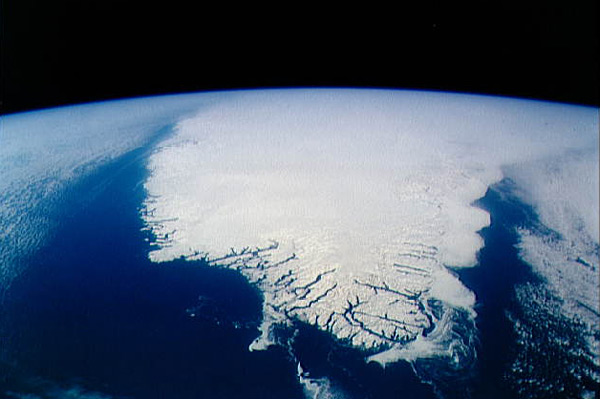The
Holocene is the current geological epoch which started 11,500 years ago when
the glaciers began to retreat. More details of the kind of animal or a
background can be found here.
So what is RCC ? It refers to a the major
periods of rapid climate change as described by P.A. Mayewski et al.(2004)
Why RCC ? Changes in the Holocene both in
terms of magnitude and rapidity are incomparable to the last glacial age. On the other hand, from a perspective in terms of the development of humanity and the growth of
civilization, these rapid changes in climate (in the space of few hundred years or shorter) had a major impact on humanity and society.
Therefore, we must look into the Holocene climatic history as this would help us understand better about the relationship between rapid climate change and the destruction/construction of civilizations
For now, looking
at the Holocene in general P.A. Mayewski et al.(2004) acknowledged that its climate
variations “have been larger and more frequent” than previously thought.Below is
a concise and clear picture of the major periods of rapid climate change (RCC)
around the globe from the same paper.
There
are a few important features that should be noted from the diagram:
·
During
most of these periods there are abrupt climate changes even in the absence of
large unstable ice sheet such as that during the Pleistocene period.
· Climate change is not singular for anyone place, it varies depending on the
geographical location. (Please enlarge the diagram to make it clearer!)
There
are multiple factors that contributed to the changes in climate throughout the
different periods within the Holocene. Some of these include; hydrological cycles, sea level, sea ice extent (forest cover) and solar variability.
Greenland is a good example of how abrupt climate change had create societal disorder in the Norse civilization and in turn contributed to its collapse. The Norse arrived at Greenland after AD 985 (Seaver 2010). As shown in below's graph, the arrive of the Norse coincided with the Medieval warm period (AD1000-AD1400) which had allowed them to expand.
(Mann 2002,.Ogilvie and McGovern 2000) It was estimated that at the time it was around 4 degree warmer than in the 20th century
(Arneborg 2008). They had a pastoral economy and kept cattle sheep and goats for winter food. The little ice age commenced after AD 1400 and this associated the collapse of Norse Greenland. However, things were more complicated than that. We must examine a wide range of factors in order to understand that a complex system led to the collapse, contributed directly and indirect by abrupt changes. We must move away from the notion that cooling was the singular problem.
Evidence was clear that during the period, sea level started rising and fertile lowland, used by the Norse during their colonization was drowned. In places more than 200ha of fertile land was lost. Thus, rising sea level had destroyed their land for pastures. Additionally, the increasing wetter and colder period had meant fodder collection and successful wintering of livestock decreased dramatically
(Amorosi et al. 1997). In turn, the Norse did adopted to changes, contrary to others, shown by their diet from mainly dairy products and terrestrial food to marine food. Date from clothing found that Norse did live their in AD 1430, contrary to
Orlove (2005) who subscribed their collapse between 1350-1400 AD.
Increases in Sea Ice and storms had a major impact on their society. A research conducted by
Jensen et al (2004) showed that sea-ice diatoms increased suddenly between the period 1245-1589 and this represented cooler climate. At the same time, the presences of Benthos and Atlanic species points to strong wind activities. More storms might salt was blow from the sea to inland area. This had affect area for grazing and in turn their livestock (Diamond 2005). Sea ice had meant that trading with Europe became harder and less attractive. Wood was one of the goods that Nose brings back from Europe which were use for warmth during long winters as woods were difficult to find in Greenland
(Dugmore et al 2007). Flour was also traded for food to supplement their diet and the volume of flour traded was hindered by increasing level of sea ice. Demand for walrus hide used for making ropes dropped dramatically when Europe developed the hemp ropes (a cheaper alternative). The development of dried Atlantic cod around 1100AD also hampered Norse economy in relation to Europe. Also, evidence showed that mass production was evident in Greenland since densely packed fish bones were found in the Northern and Western region
(Dugmore et al 2007)
Evidence b
y Mainland (2006) using dental microwear analysis showed that sheep and goats in Greenland have a high level of soil ingestion. This suggest overgrazing occurred. This pattern was found in the in both Eastern and Western settlements form 1150 onwards until 14th and 15th century. Combined with the cooler climate and worsen status of their environment their living quality is decreasing and societal disorder could be present in towards the end of their civilization around the early 14th century. Given that evidence were found that Norse was still present in 1450, we could estimate that people staying leaving slowly.
The above have shown that societal disorder rose from environmental degradation and changes in commerce. Directly impacted by a cooler climate, rising sea level and increases in sea ice cover. These had all lowered their ability to adopt. Thus, this example have showed how abrupt changes in climate led to the demise of the Norse civilization in Greenland.





